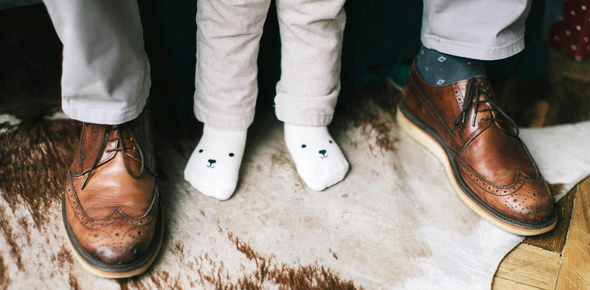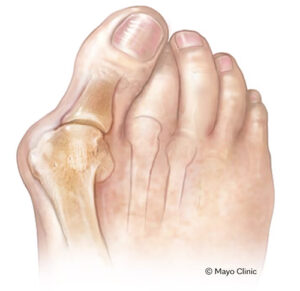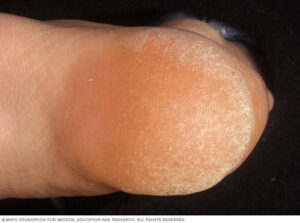How to Handle Common Foot Problems: Bunions, Corns, and Calluses

Bunions, corns, and calluses are some of the most common foot problems individuals experience in their day-to-day lives. If you think you may be experiencing one of these foot-related issues, here is how to identify each condition, when to see a podiatrist, and what treatment the condition will likely involve.
Bunions
 A bunion is a bony bump that forms where the base of your big toe meets your foot. Bunions are very common, and it is estimated that 1 in 3 Americans have the condition. Some people are born with bunions and have inherited the foot type from family members. At the same time, others develop the condition from consistently wearing shoes that are too narrow, working on their feet, or as a result of other health conditions such as arthritis.
A bunion is a bony bump that forms where the base of your big toe meets your foot. Bunions are very common, and it is estimated that 1 in 3 Americans have the condition. Some people are born with bunions and have inherited the foot type from family members. At the same time, others develop the condition from consistently wearing shoes that are too narrow, working on their feet, or as a result of other health conditions such as arthritis.
To diagnose a bunion, podiatrists will examine the foot and take an x-ray. Treatments for bunions vary widely based on the bunion’s severity and the level of pain it causes. For less severe bunions that do not cause much discomfort, treatments may include wearing roomier shoes, padding on the bunion to protect it from rubbing against the shoe, wearing shoe inserts, applying ice, or taking pain reliever medications. For bunions that cause severe pain and interfere with daily activities, treatment will likely consist of surgery to remove the bump and straighten the big toe. Those who undergo surgery typically resume normal activity after two to three months.
If you suspect you have a bunion, see a podiatrist, even if your bunion does not seem severe. A podiatrist will officially diagnose the condition and help you design a plan to manage your bunion. The earlier you diagnose and begin treating a bunion, the less likely you are to need surgery in the future.
Corns and Calluses
 Corns and calluses are thick, hardened areas of skin that often occur on the feet due to friction or pressure. Although corns and calluses are very similar, they are different conditions. Corns are small, deep patches of skin with a rigid center that become tender and painful when pressure is applied. Calluses are hard and thick areas of skin that often have a wider surface area than corns and are not usually painful.
Corns and calluses are thick, hardened areas of skin that often occur on the feet due to friction or pressure. Although corns and calluses are very similar, they are different conditions. Corns are small, deep patches of skin with a rigid center that become tender and painful when pressure is applied. Calluses are hard and thick areas of skin that often have a wider surface area than corns and are not usually painful.
Typically, you can treat corns and calluses on your own at home. However, if your corn or callus becomes painful or inflamed, you should visit a podiatrist. Additionally, those who have diabetes or poor blood flow should see a podiatrist before attempting any at-home treatments.
 Corns and calluses on the feet can be removed by soaking your feet in warm water to soften the skin, gently exfoliating the corn or callus with a pumice stone or emery board, and applying lotion to the area. It is also a good idea to wear padding on the area until the skin is fully healed. To prevent corns or calluses from returning in the future, be sure to wear shoes that fit properly and always wear socks with your shoes.
Corns and calluses on the feet can be removed by soaking your feet in warm water to soften the skin, gently exfoliating the corn or callus with a pumice stone or emery board, and applying lotion to the area. It is also a good idea to wear padding on the area until the skin is fully healed. To prevent corns or calluses from returning in the future, be sure to wear shoes that fit properly and always wear socks with your shoes.
Just because these foot conditions are common does not mean they should be ignored. Our podiatrists at Family FootCare can help you treat these conditions and get you back on your feet in no time. Contact one of our Family Footcare offices today to set up an appointment.
Sources:
https://www.mayoclinic.org/diseases-conditions/bunions/diagnosis-treatment/drc-20354805
https://my.clevelandclinic.org/health/diseases/14386-bunions-hallux-valgus
https://www.mayoclinic.org/diseases-conditions/corns-and-calluses/symptoms-causes/syc-20355946
https://my.clevelandclinic.org/health/diseases/16896-corns-and-calluses
